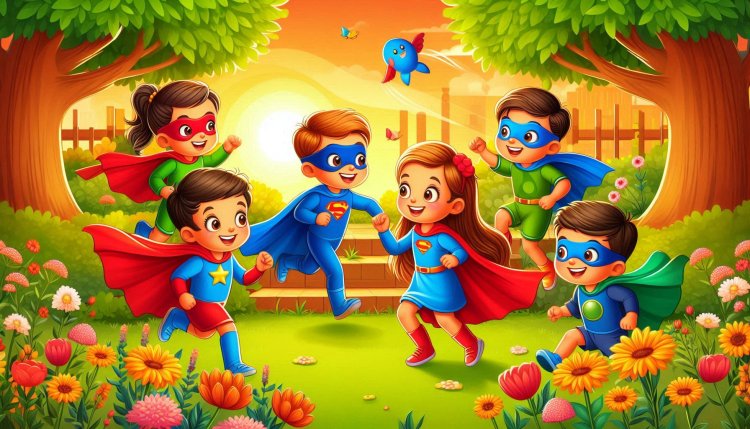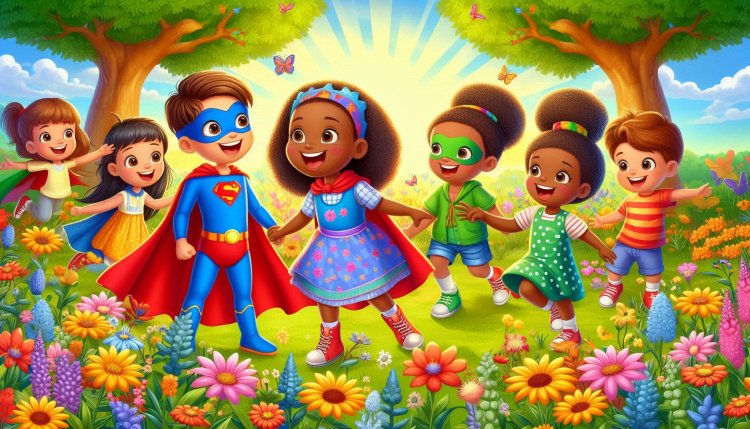Super Why Dress Up Games: Boost Literacy & Creativity in Kids
Discover how Super Why Dress Up Games combine literacy skills and creativity for kids. Learn where to play, educational benefits, and parent tips for maximizing learning.
Introduction
In today’s digital age, educational games are powerful tools for making learning fun. Among these, Super Why Dress Up Games stand out, blending beloved characters from the PBS Kids series Super Why! with creative, literacy-focused gameplay. These games not only entertain but also help children ages 3–7 develop critical reading skills. In this article, we’ll explore how Super Why Dress Up Games work, their educational benefits, where to find them, and tips for parents to enhance the experience.
What Are Super Why Dress Up Games?
Super Why! is an Emmy-winning animated series that transforms classic fairy tales into adventures centered on literacy. The show’s characters—Whyatt, Princess Presto, Alpha Pig, and Wonder Red—team up to solve problems using reading, spelling, and phonics.
Super Why Dress Up Games extend this mission into interactive play. Kids engage with characters by selecting outfits, accessories, and props, often tied to story-based challenges. For example, dressing Princess Presto might involve spelling exercises to unlock magical items, while helping Alpha Pig could require letter recognition to build tools. These games merge imaginative play with foundational literacy skills, making them ideal for early learners.
Why Super Why Dress Up Games Are Educational Powerhouses
1. Enhance Literacy Skills
The core of Super Why Dress Up Games is their focus on reading readiness:
-
Letter Recognition: Games often ask kids to identify letters to progress, reinforcing alphabet knowledge.

-
Phonics Practice: Characters like Princess Presto emphasize letter sounds, helping kids connect symbols to sounds.
-
Spelling & Vocabulary: Players spell words to unlock costumes or solve puzzles, expanding their vocabulary.
By framing learning within playful narratives, kids absorb skills without feeling pressured.
2. Spark Creativity & Imagination
Dress-up games naturally encourage creativity. Children experiment with colors, styles, and storytelling as they outfit characters for missions. For instance, choosing a superhero cape for Whyatt might lead to a quest about bravery, while a royal gown for Princess Presto could involve a fairy tale rescue. This creativity fosters narrative thinking, a key component of literacy.
3. Promote Interactive Learning
Unlike passive screen time, these games require active participation. Kids make decisions, solve problems, and see immediate feedback—like unlocking a new scene after correctly spelling a word. This interactivity keeps them engaged and reinforces cause-and-effect learning.
4. Safe, Child-Friendly Design
Hosted on trusted platforms like PBS Kids, Super Why games are ad-free and designed with child safety in mind. Parents can feel secure knowing their kids aren’t exposed to inappropriate content or ads.
Where to Play Super Why Dress Up Games
Ready to dive in? Here’s where to find these educational gems:
-
PBS Kids Website
The official Super Why! section on pbskids.org offers free dress-up games. Titles like “Princess Presto’s Spelling Dance” and “Alpha Pig’s Paint By Letter” are fan favorites. -
Mobile Apps
Download the PBS Kids Games app for on-the-go play. Many Super Why games are optimized for tablets and smartphones, perfect for car rides or waiting rooms.

-
Streaming Platforms
Some games are available through PBS Kids’ partnerships with platforms like Amazon Kids+ or YouTube Kids. -
Educational Gaming Sites
Websites like ABCmouse or Coolmath Games occasionally feature Super Why-themed activities, though always verify their credibility first.
Tips for Maximizing the Learning Experience
To get the most out of Super Why Dress Up Games, parents can:
-
Play Together: Join your child and ask questions like, “What letter does ‘super’ start with?” to reinforce lessons.
-
Connect Games to Offline Activities: After playing, read a related book or practice spelling with physical letter blocks.
-
Set Time Limits: Balance screen time with hands-on play using the American Academy of Pediatrics’ guidelines (1 hour/day for ages 2–5).
-
Celebrate Progress: Praise your child’s achievements,
super why dress up games whether they master a new word or design a creative outfit.
Conclusion
Super Why Dress Up Games offer a unique blend of entertainment and education, helping kids build literacy skills while expressing their creativity. By integrating these games into your child’s routine—and participating alongside them—you’ll turn screen time into a productive adventure. Visit PBS Kids today to start exploring, and watch your little one unlock the joy of reading!
What's Your Reaction?























